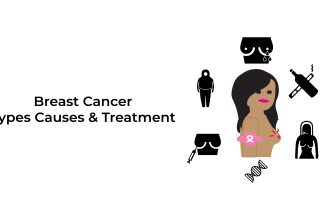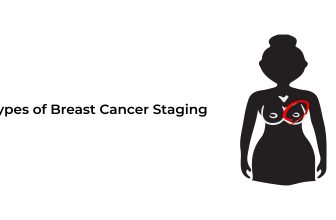Breast Cancer Screening
We’re all familiar with Pink October and breast cancer. Breast cancer awareness has improved dramatically in recent years, and women are more aware of its symptoms and risk factors. Knowing about the condition is the first step to preventing it, and it’s essential to stop people from dying from the disease. This article will discuss breast cancer and the screening process in detail.
Breast Cancer
As the name implies, this type of cancer affects breast cells, and they start to grow uncontrollably, resulting in lumps. These lumps can be painful, and cancerous cells tighten the breast tissues so the patient can feel tenderness. The symptoms of breast cancer include:
- Lumps
- Breast pain
- Tenderness and tightening of breast tissues
- Discoloration
- A patient can feel a change in the size of one or both breast
- Sore nipples
- Irritation and redness
Symptoms may differ in different people, but breast cancer patients generally face some of these symptoms, which are mentioned above.
Causes of Breast cancer
As previously discussed, malignant cells in the breast increase, resulting in a lump on the breast. Because cancerous cells develop quicker than normal cells, they immediately impact on person’s health and can spread into other body parts. If these malignant cells are not treated gradually, they can spread into the whole body. Breast cancer research has discovered that these malignant cells typically begin developing in alveoli, a milk-producing duct, or glandular tissues and then spread to other breast cells. Genetics, an unhealthy lifestyle, or hormonal issues can cause breast cancer. These are common factors linked to developing malignant cells in the breast.
Breast cancer screening
Screening is the process used to detect a disease’s symptoms. Doctors employ a variety of approaches and strategies while screening for various diseases. Screening tests are critical in the diagnosis of disorders such as cancer. Doctors also advise that even if one is feeling that they are in good health, or should get screened so that any pre-cancerous cells developing in one’s body can be recognized and treated. Pre-cancerous cells are more accessible to treat than cancerous cells.
When one visits the doctor for a screening, they get information about risky factors and then suggest screening tests based on that information. Gender, age, ethnicity, genetics, and lifestyle all play a part in developing many types of malignancies. Genetic testing is available for people with a family history of certain diseases. If doctors get to know about any signs of cancer, they will propose diagnostic tests for a more specific diagnosis. Screening is nothing to be terrified of; it is only a preventative procedure to avoid terrible repercussions, such as death.
Methods of Breast cancer screening
Doctors use a variety of tests during breast cancer screening, including mammography, MRI, tissue testing, and others, for the early detection of breast cancer. Tests vary from person to person depending on their risk factors, their lifestyle, and genetic situation. Tests prescribed by doctors typically have no or can have minor side effects, so there’s no harm in evaluating yourself to ensure that you’re not at risk of developing breast cancer. And treating the disease early on is always easier than repairing the damage caused by the condition. Screening can help to illness from becoming severe. The following are methods that are used for breast cancer screening:
Mammography
Mammogram screening is a kind of X-ray displayed on the inside of the breast and is commonly used by doctors for breast screening. Doctors can detect a tumor, even a small one, after examining a person’s breast photographs. Mammography can also be used to detect malignant or pre-cancerous cells. Conversely, women with dense breasts should undergo further medical testing since mammography cannot obtain accurate photographs and X-rays of their breasts because dense breast tissues and tumors appear identical in pictures. This problem affects young women, so extra testing, such as an MRI, is recommended.
Types of Mammograms
- Film Mammography
- Digital mammography
- Digital breast tomosynthesis
Mammography is classified according to the procedure that is used and the type of results which is obtained. Film mammography is a traditional method that produces x-ray-like results. Digital mammography is a more technologically advanced treatment in which various instruments are used to create a digitized version of breast images. DBT (Digital breast tomosynthesis) is a very efficient and modern type of diagnostic mammogram that provides images of the breast from many angles for exact diagnosis; in other words, it produces 3D images of breast tissues.
MRI
MRI is another tool for breast screening. The term “MRI” refers to a device used for magnetic and radio waves to produce a picture of the inside of the breast on a computer screen. This approach is typically performed on women with a high risk of breast cancer. Different varieties of MRI exist based on the technology utilized in the process, such as nuclear magnetic resonance. The potential benefit of MRI screening is that the patient is not directly exposed to hazardous radiation.
Because MRI provides more precise results than mammography, patients with a history of cancer or radiation treatments should have more frequent breast cancer screenings. Screening is not a treatment and will not prevent a person from dying; it only serves to reveal the presence of a disease.
Other tests
Other procedures, such as a breast exam, breast cancer genetic testing, and tissue sampling, are used to diagnose breast cancer. These are clinical examinations with no harmful effects. Breast tests should be done when a doctor physically examines any signs of lumps or abnormalities in the breast’s size, color, or physical qualities. If an individual sees an abnormal change in breast size or notices a lump growing larger by the day, they should schedule a breast exam with the doctor. Examination of yourself is called breast cancer self-exam. Other treatments in breast cancer screening include thermography, which involves monitoring the temperature of the breast, which can fluctuate in the presence of a malignant tumor. Aside from checking temperature, doctors can perform tissue sample, which includes examining breast tissues under a microscope to see whether they are malignant or not.
References
- https://www.cdc.gov/cancer/breast/basic_info/screening.htm
- https://www.cancer.net/cancer-types/ breast cancer /screening
- https://www.mayoclinic.org/diseases-conditions/breast-cancer/symptoms-causes/syc-20352470
- https://www.cancer.gov/types/breast/patient/breast-screening-pdq







